How can I resolve these errors:
- Loading the include file 'EF.Utility.CS.ttinclude' returned a null or empty string.
- Value does not fall within the expected range.
Tools Used: VS 2012, Entity Framework 5.0.0, T4MVCExtensions 3.5.0, .NET Framework 4.5
I've been using EF and T4 templates in a project within a large MVC solution without incident. Now, when I right-click on the edmx diagram, EF responds with the message: Value does not fall within the expected range. When I compile the EF project it responds with these messages:
- Loading the include file 'EF.Utility.CS.ttinclude' returned a null or empty string. The transformation will not be run. C:\Projects\NSAForms\NSAForms\NSAFormsEDM\NSAFormsEntities.tt
- Failed to resolve include text for file:C:\Projects\NSAForms\NSAForms\NSAFormsEDM\EF.Utility.CS.ttinclude C:\Projects\NSAForms\NSAForms\NSAFormsEDM\NSAFormsEntities.tt
Every table in the database has a primary key. I'm struck by how suddenly this issue appeared. Does anyone have some suggestions how to resolve this issue?
Thanks in advance,
Arnold
